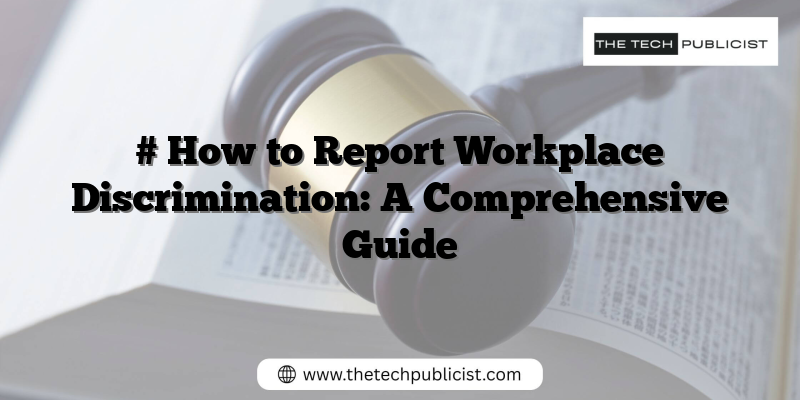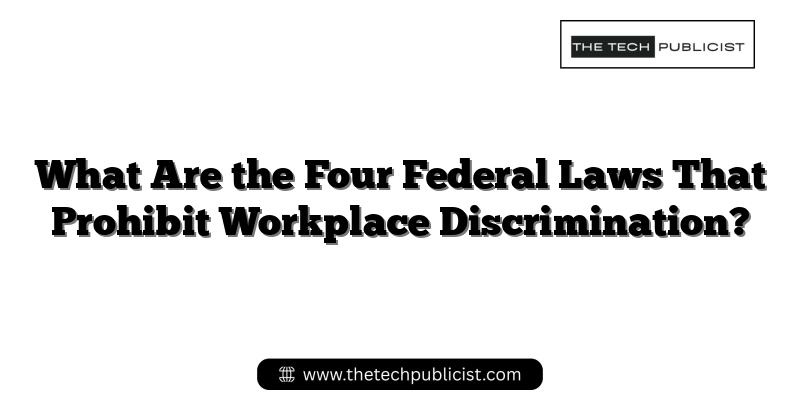Workplace discrimination is more than just a professional hurdle; it can seriously impact your mental and emotional health. Understanding how to report discrimination is vital for cultivating a safe and fair work environment. This guide offers a detailed process, useful advice, and resources to support you in addressing discrimination while ensuring your concerns are acknowledged and addressed.
Understanding Workplace Discrimination
Discrimination at work happens when someone is treated unfavorably due to characteristics like race, gender, age, disability, or religion. The U.S. Equal Employment Opportunity Commission (EEOC) reported 67,448 discrimination charges in 2021 alone, highlighting its prevalence in workplaces. Recognizing different types of discrimination is essential for knowing when and how to escalate your concerns.
Types of Discrimination
- Race and Color Discrimination: Biased treatment based on race or skin color.
- Gender Discrimination: Unequal treatment because of gender or sexual orientation.
- Age Discrimination: Biased actions against those aged 40 or older.
- Disability Discrimination: Adverse treatment affecting people with disabilities.
- Religious Discrimination: Unfair treatment due to an individual’s religious beliefs.
For a full list and definitions, visit the EEOC’s official website.
Steps to Report Workplace Discrimination
1. Recognize and Document the Incident
Before taking action, it’s crucial to identify discrimination accurately. Here’s how to document your experience effectively:
- Noting dates and events: Record specific incidents, including dates, times, and locations.
- Gathering evidence: Collect related emails, texts, recordings, or any form of communication regarding your experience.
- Identifying witnesses: List colleagues who witnessed the incidents and might support your claims.
This documentation is crucial for building your case.
2. Review Your Company’s Policies
Understanding your employer’s protocols for handling discrimination is crucial. Check your employee handbook, which usually details the procedure for reporting a complaint. This ensures you’re following the appropriate channels outlined by your employer.
3. Approach Your Supervisor or HR Department
With your evidence in hand, it’s time to report the issue to your supervisor or HR department:
- Being clear and professional: Present your case factually, utilizing your documented evidence.
- Requesting a meeting: Face-to-face discussions or video calls can be more effective than emails.
- Following up: If there’s a delay in response, follow up to ensure your complaint is being addressed.
4. Escalate If Necessary
If your complaint isn’t adequately addressed internally, consider these options:
- File a charge with the EEOC: If internal resolution fails, file a complaint with the EEOC within 180 days of the incident.
- Seek external support: Legal advice can strengthen your claim. Many employment lawyers offer free consultations to evaluate your situation.
5. Consider Emotional Support
Navigating workplace discrimination can be emotionally challenging. Counseling or support groups can be beneficial. Organizations like the National Alliance on Mental Illness (NAMI) offer resources for those dealing with stress from discrimination.
Additional Resources
- Find more information on the Equal Employment Opportunity Commission.
- For mental health resources, delve into the National Alliance on Mental Illness.
Frequently Asked Questions
1. What should I do if my HR department ignores my complaint?
Document all interactions and escalate your complaint to higher management or file with the EEOC if your HR department is unresponsive.
2. Can I report discrimination anonymously?
Some companies allow anonymous reporting. Check your employee handbook or ask HR for details regarding the anonymous process.
3. What evidence do I need to support my discrimination claim?
Emails, texts, witness statements, and a timeline of events can all help support your case.
4. Can I be fired for reporting discrimination?
Retaliation for reporting discrimination is illegal. Document any such occurrences and seek legal advice if necessary.
5. How long do I have to file a complaint with the EEOC?
Typically, you have 180 days from the incident to file with the EEOC, although this can vary based on specific situations and state laws.
In conclusion, addressing workplace discrimination is essential for upholding personal rights and workplace integrity. By following the steps outlined in this guide, you can take effective action to ensure your concerns are managed appropriately. Remember, your voice matters, and there are resources available to support you throughout this process.

Manali is the founder and editor of The Tech Publicist, a legal-focused blog dedicated to breaking down complex legal topics into plain, practical advice. With a passion for empowering everyday readers, Manali writes about personal rights, property laws, and real-world legal situations that matter. When not decoding the law one article at a time, Manali enjoys diving into tech trends and advocating for accessible legal education.




